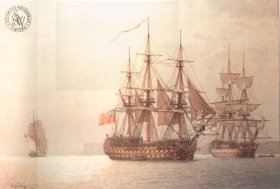 HMS Glory (center) | |
| Class overview | |
|---|---|
| Name | Duke |
| Operators | |
| Preceded by | Barfleur class |
| Succeeded by | Boyne class |
| In service | 18 October 1777 – 1843 |
| Completed | 4 |
| Lost | 1 |
| General characteristics | |
| Type | Ship of the line |
| Length |
|
| Beam | 50 ft (15 m) |
| Propulsion | Sails |
| Armament |
|
| Notes | Ships in class include: Duke, Glory, St George, Atlas |
The Duke-class ships of the line were a class of four 98-gun second rates, designed for the Royal Navy by Sir John Williams. [1]